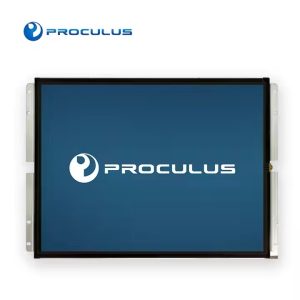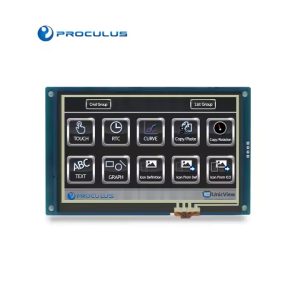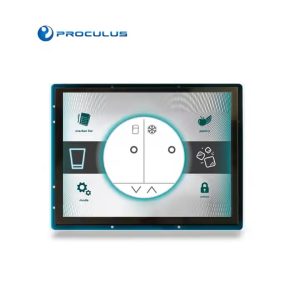The Characteristics of Liquid Crystal Materials for TFT LCD Screens
Many people know what the characteristics of TFT LCD screens are, but do you know what are the characteristics of TFT LCD screen material? Today, we will tell you about the knowledge of the characteristics of TFT LCD screen materials.
With the rapid development of TFT array-driven liquid crystal display technology, in recent years, TFT LCD not only occupied the high-end display market such as portable notebook computers but also challenged the desktop display with the improvement of the manufacturing process and cost reduction. Because the TFT array directly drives the liquid crystal molecules, the cross-distortion effect is eliminated, and the display information capacity is large; the use of low-viscosity liquid crystal materials greatly improves the response speed, which can meet the needs of video image display. Therefore, compared with TFT display, TN type, and STN type liquid crystal display have made a qualitative leap and become one of the most promising display technologies in the 21st century.
The characteristics of TFT LCD screen materials:
TFT also adopts the principle of TN type electro-optic effect, but the TFT LCD material is different from the traditional liquid crystal material. In addition to good physical and chemical stability and a wide operating temperature range, the materials of the TFT LCD module must also have the following characteristics:
(1) Low viscosity, the viscosity should be less than 35 mPa 8226/s at 20℃ to meet the needs of fast response.
(2) Low threshold voltage (Vth) to achieve low voltage drive and reduce power consumption.
(3) High voltage holding ratio (V.H.R), that is, LCD materials must have high resistivity, generally requiring at least greater than 1012Ω826cm.
(4) The optical anisotropy (Δn) is matched to the TFT to eliminate the rainbow effect for greater contrast and wide-angle field of view. The range of △n value should be between 0.07~0.11.
At present, among the TFT LCD screen materials, TN type LCD screen has gradually entered a recession period, the market demand is gradually shrinking, the production capacity is excessive, the price competition is fierce, and there is no investment value. STN-type LCD will gradually enter a mature stage, the market demand will grow steadily, and the production technology will be fully mature. The TFT-type LCD provided by is entering a new round of rapid growth, and the market demand will increase sharply, and it is expected to become one of the most promising display materials in the 21st century.
Although liquid crystal materials for the wholesale TFT screen whose end groups are cyano groups, such as biphenyl and phenylcyclohexane liquid crystals, have been widely used in TN and STN LCDs, their viscosity is higher than that of fluorine-containing liquid crystals with the same molecular structure. These unfavorable factors limit the application of this type of compounds in TFT LCDs. The ester liquid crystal has the characteristics of simple synthesis method, wide variety, and wide phase transition range, but its high viscosity greatly reduces the dosage in TFT formulation. Therefore, the development of new liquid crystal compounds that meet the above requirements has become the focus of liquid crystal chemistry research.
The liquid crystal materials have developed rapidly with the development of liquid crystal devices, from biphenyl nitrile, esters, oxygen-containing heterocyclic benzenes, and pyrimidine ring liquid crystal compounds to cyclohexyl (bi) benzene, diphenylacetylene, ethyl bridge bonds and various fluorine-containing aromatic ring liquid crystal compounds. Japan has synthesized difluoroethylene liquid crystal compounds with stable structure, and its molecular structure is more and more stable, and it continuously meets the performance requirements of STN and TFT LCDs.

 English
English


